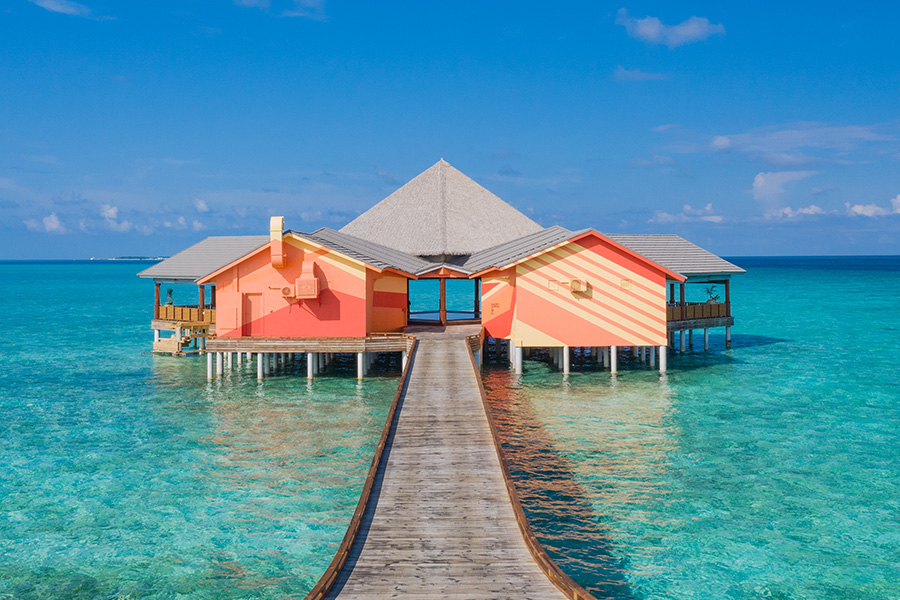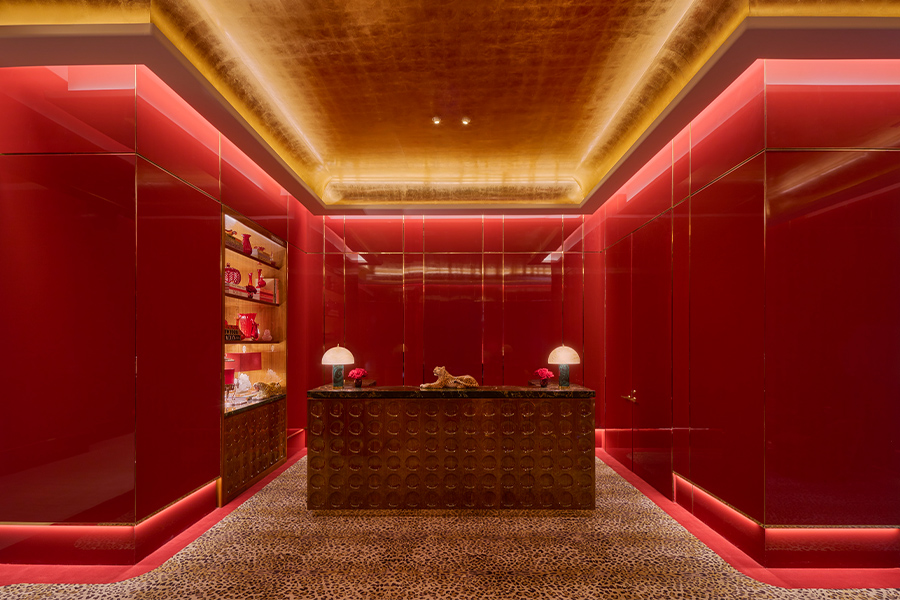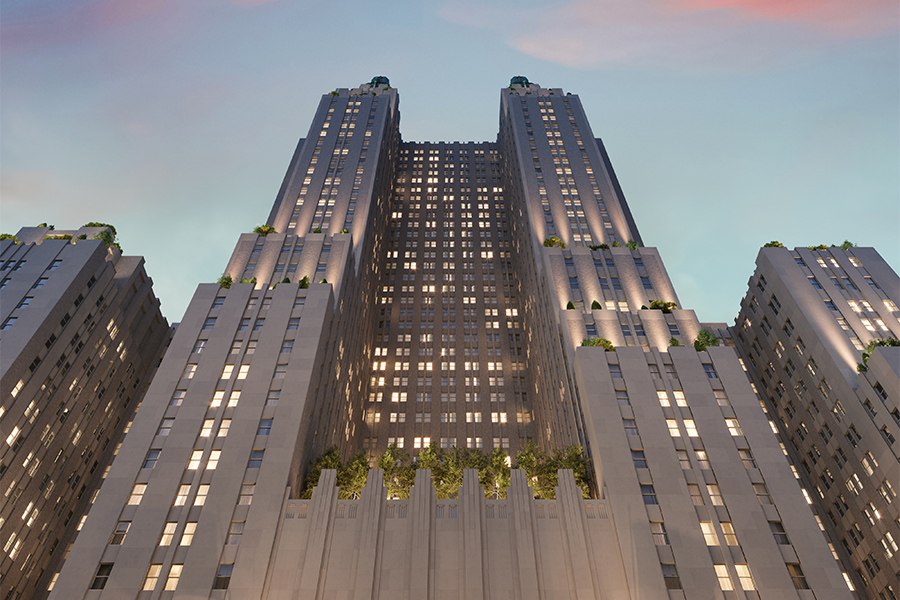When sumptuous seclusion calls, the Maldives delivers with its tropical climate and experiential accommodations. The locale continues to set a new standard for luxury with retreats crafted to blur the indoors and out, from the eco-conscious Kudadoo Maldives (from New York firm Yuji Yamazaki Architecture), which landed on the island last year, to the still-to-come 64-villa Capella Maldives, a collaboration between Japanese architect Kengo Kuma and Hong Kong-based designer André Fu. In 2019 alone, the small nation welcomed 20 new resorts and 1.5 million visitors, proving that the remote haven, with its unsurpassed islands, is truly a must-visit paradise.
The Standard, Huruvalhi Maldives
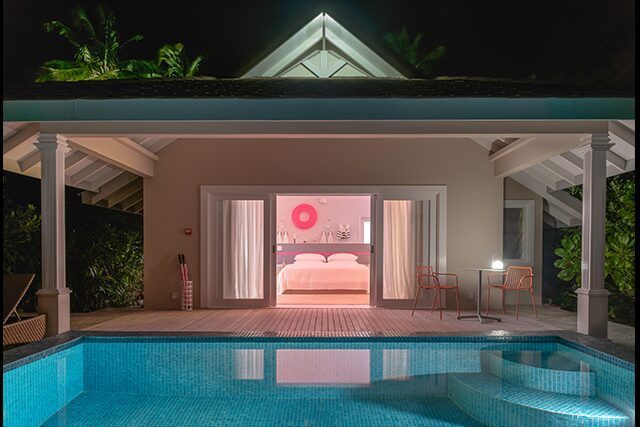
A Lagoon Beach Villa at the Standard’s first tropical locale
The Standard planted its maiden flag in Asia last fall with its debut on the reef of Raa Atoll. New York-based design firm Goodrich, in tandem with Standard’s in-house team, oversaw the brand’s translation into the tropical setting. “Instead of a quiet escape for couples and honeymooners, Standard envisioned a lively, social guest experience,” says firm founder and principal Matthew Goodrich. All 115 overwater and beach villas pop with color and quirky details like glittering disco balls or large-scale artwork by Rostarr.
With a design story inspired by the influence explorers and settlers had in shaping Maldivian culture, “we wanted to make sure that you would feel free, feel inspired, and explore,” explains Standard’s chief design officer Verena Haller. Adds Goodrich: “We loved the idea of using color, murals, and graphic art to simultaneously blend into the local culture and surroundings, and also stand out from all the other Maldives resorts.”

The Standard, Huruvalhi Maldives offers both Ocean and Lagoon Overwater Villas
Westin Maldives Miriandhoo Resort

An aerial view of the 70 overwater villas at the Westin Maldives Miriandhoo Resort
The Westin Maldives Mirihandoo boasts a highly sustainable footprint courtesy of Milanese architecture firm Peia Associati. Also located on Raa Atoll, the property minimally disrupts the reef’s natural balance with unique considerations, from recycled materials to natural ventilation solutions. “The common point is the focus on double-roof strategy,” says Giampiero Peia of Peia Associati. “The natural cross ventilation result was one of the most appreciated factors by the client, who, despite the additional cost, understood how much the attractive and organic shape saved 30 to 40 percent of energy for air conditioning and provided the maximum internal comfort, too.”

A spiral staircase marks the airy Island restaurant at the Westin Maldives
The resort’s 70 accommodations and nine communal facilities feature interiors lined with timber sourced from neighboring countries, while plaster composed of dead coral and upcycled glass accentuates the organic forms of the façades.
Faarufushi
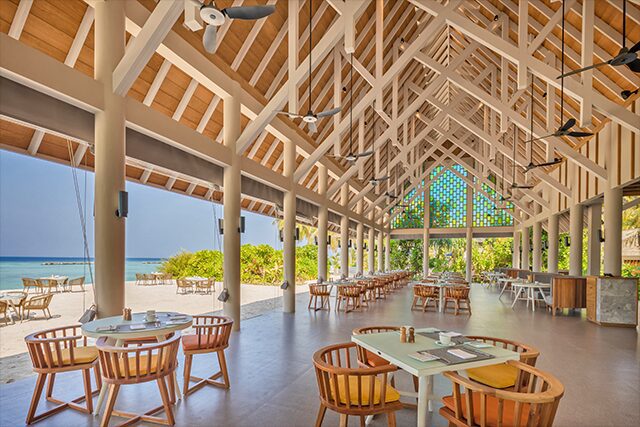
The all-day, open-air café at Faarufushi sits under soaring ceilings
Simplicity is key at Faarfushi, an immersive resort designed by Nemaworkshop with a materiality that echoes the natural splendor of the Maldives. “We tried to minimize the number of walls and hone in on biophilic elements that drive home the indoor-outdoor connection,” says Anurag Nema, founder of the New York- and Hong Kong-based firm. Public spaces, like the all-day café and reception area, sit beneath soaring ceilings that reinforce the outdoors, while the property’s lagoon restaurant frames views of marine environments. The secluded spa facility is also shrouded in greenery and features treatment rooms modeled after cocoons, with hard exteriors and soft white interiors. “After visiting many islands in the Maldives, we concluded that the design had to be restrained, with nature as the centerpiece,” Nema says. “We made a conscious effort to stay away from one distinct style.”
Photography by Ahmed Shuau, Ralf Tooten, and courtesy of Nemaworkshop
This article originally appeared in HD’s February 2020 issue.

